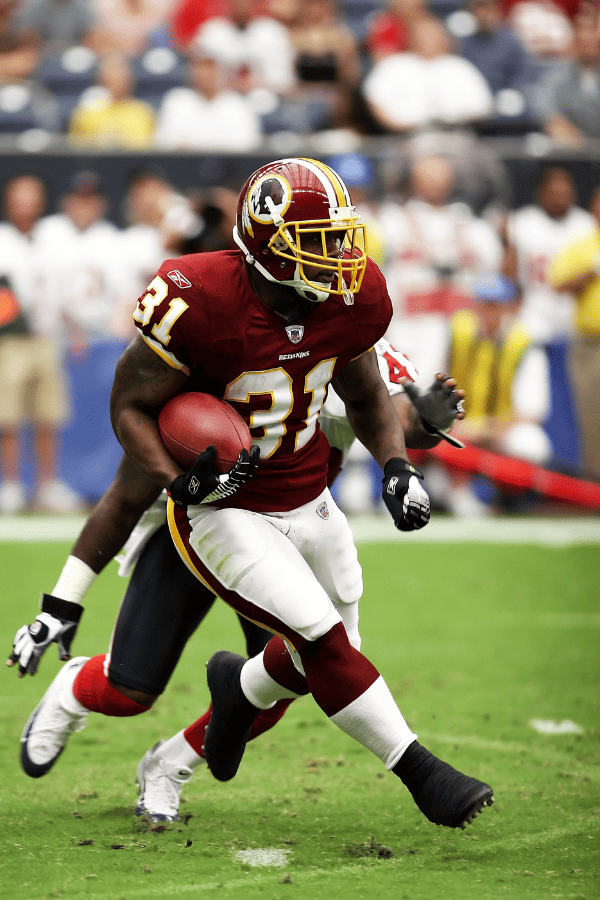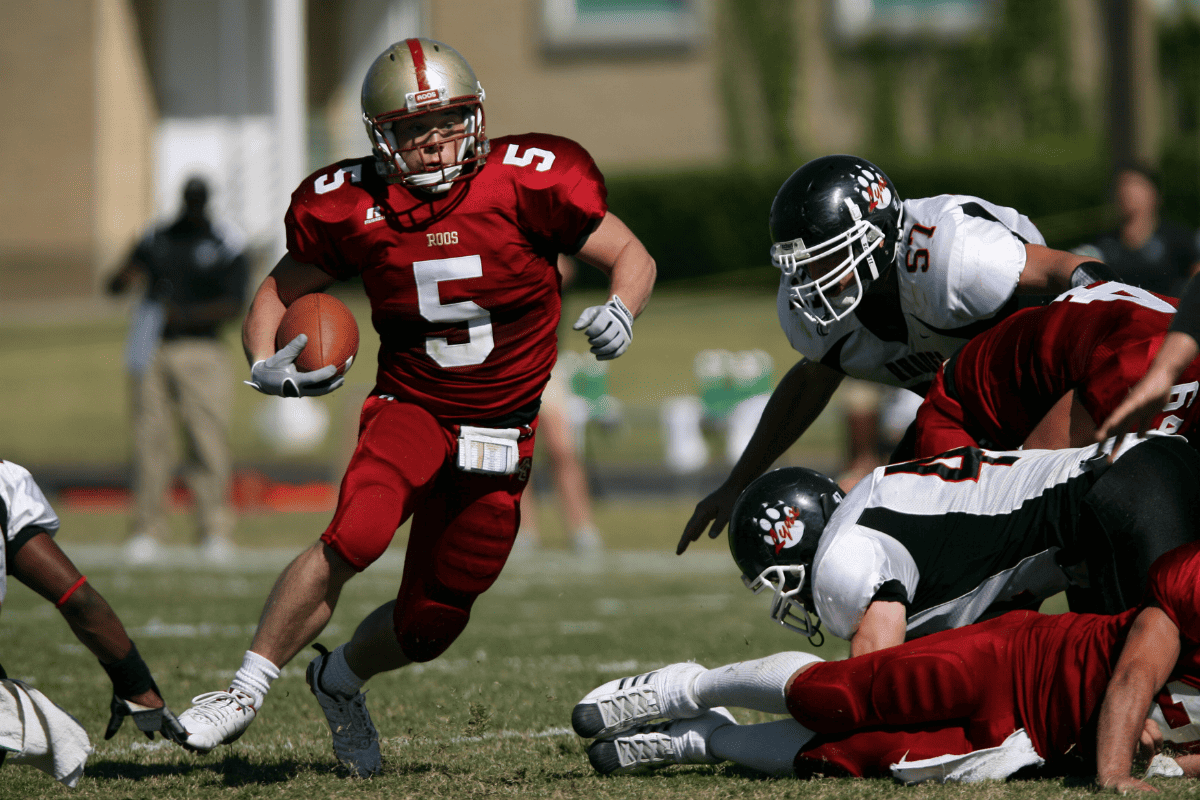Running Back vs Quarterback: Football’s Key Offensive Roles
In American football, each position on the field plays a critical role in the team’s success, especially in the offense. Two of the most prominent and vital roles are those of the running back and the quarterback.
Both positions are fundamental to the team’s offensive strategy, yet they differ significantly in responsibilities, skills, and play styles. For newcomers to the sport, grasping the distinctions and similarities between these positions is essential to understanding the game’s dynamics.
This article aims to shed light on the unique roles of the running back and the quarterback, explaining how they contribute to the offense and interact within the team’s playbook.
Quarterback: The Team’s Strategic Leader

The quarterback is often considered the most crucial player on the football field, serving as the team’s strategic leader and the focal point of the offense. This position requires a player who can not only make precise and powerful throws but also possess a deep understanding of the game’s tactics.
The quarterback is responsible for calling the plays, which involves choosing the right strategy based on the defense’s formation and the game situation. Once the ball is snapped, the quarterback must quickly decide whether to pass, hand off to a running back, or run with the ball themselves. Their ability to read the defense and make split-second decisions can change the outcome of the game.
In addition to physical skills like arm strength and accuracy, a successful quarterback must exhibit leadership qualities, maintaining composure under pressure and guiding the team through challenging situations.
Essential Skills for a Successful Quarterback
A quarterback needs a unique set of skills to excel. Arm strength and accuracy are fundamental, enabling them to make long and precise throws. Decision-making is another critical skill; a quarterback must quickly analyze the situation and make the best choice under pressure.
A deep understanding of the game’s tactics is also vital, as it allows the quarterback to read defenses and adjust plays on the fly. Leadership is an intangible yet crucial skill – a quarterback must inspire confidence and rally the team, particularly in high-stress moments.
Lastly, mobility can be an asset, allowing quarterbacks to evade defenders and gain yards on the ground when necessary.
Read More:
Running Back: The Powerhouse of the Ground Game

While the quarterback orchestrates the game from a strategic standpoint, the running back is often the powerhouse of the team’s ground game. Running backs are primarily responsible for carrying the ball on running plays, using their speed, agility, and strength to navigate through the defense and gain yards.
They must be able to find and exploit openings in the defense, often breaking tackles or evading defenders. In addition to rushing, running backs also play a crucial role in pass protection, blocking defenders to protect the quarterback. Some running backs are also used as receivers, adding versatility to the offense by catching passes out of the backfield.
Key Attributes of an Effective Running Back
To be effective, a running back must possess several key attributes. Speed and agility are crucial for outrunning defenders and making sharp cuts on the field. Strength and endurance enable them to withstand tackles and continue to perform throughout the game.
Vision is also important; a good running back can quickly identify the best path through the defense. Hands are essential for catching passes, and blocking skills are vital for protecting the quarterback. Mental toughness is needed to endure the physical demands of the position and to bounce back from tackles and hits.
Differences in Roles: QB vs RB
The quarterback and running back play fundamentally different roles on the field. The quarterback serves as the team’s offensive leader and primary playmaker, responsible for passing the ball, making strategic decisions, and occasionally running. They need to have a broad view of the field and a deep understanding of the game’s strategies.
In contrast, the running back’s role is more focused on executing specific plays, whether it’s rushing with the ball, receiving, or blocking. Their role is more physically demanding, requiring direct contact with defenders and relying heavily on physical attributes like speed and strength.
While the quarterback’s role is more cerebral and strategic, the running back’s role is more physical and reactive.
What Quarterbacks and Running Backs Have in Common
Despite their different roles, quarterbacks and running backs share several important traits. Both positions require a high level of athleticism and physical fitness. Quick decision-making is crucial; whether it’s a quarterback deciding where to throw the ball or a running back choosing a path through the defense, both need to make split-second decisions.
An understanding of the team’s playbook and the ability to read the opponent’s defense are also essential for both positions. Mental toughness is another shared trait, as both quarterbacks and running backs often face intense pressure and physical challenges during the game.
How Quarterbacks and Running Backs Work Together
The relationship between the quarterback and the running back is a vital aspect of a team’s offensive strategy. They work in tandem to keep the defense off balance. The quarterback may hand off the ball to the running back for a rush or use the running back as a decoy to execute a pass play.
In pass plays, the running back often serves as a protector for the quarterback, blocking incoming defenders. This interplay requires a deep understanding and trust between the two positions, as timing and coordination are key. The synergy between them can significantly impact the effectiveness of the offense, demonstrating the collaborative nature of football.
Iconic Players in Football History
Throughout football history, there have been numerous players who have left an indelible mark on the quarterback and running back positions. Quarterbacks like Johnny Unitas, Brett Favre, and Peyton Manning have become legends due to their leadership, strategic minds, and passing prowess.
On the other hand, running backs like Jim Brown, Walter Payton, and Barry Sanders are celebrated for their explosive speed, agility, and ability to make game-changing plays. These players not only excelled in their positions but also elevated the standards and inspired future generations of athletes.
Conclusion
Understanding the roles and responsibilities of quarterbacks and running backs is crucial for anyone new to football. While they have distinct positions with unique skill sets and responsibilities, their success often depends on their ability to work together harmoniously.
The quarterback, as the strategic leader, and the running back, as the dynamic force in the ground game, both play essential roles in the offense. Recognizing their differences and similarities helps to appreciate the complexity and beauty of football.

